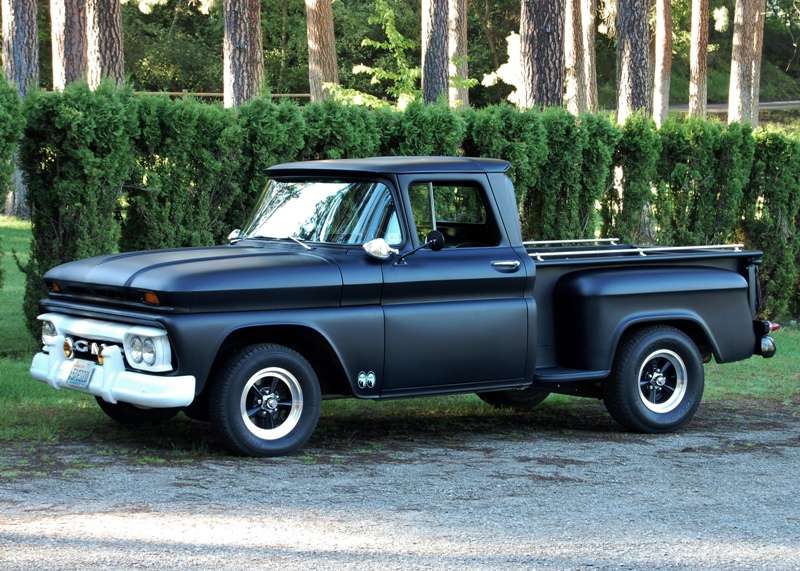Quote:
Originally Posted by Dan in Pasadena

Thanks Mark for taking the time to respond and posting the pix too. The rims I bought are TT-D's and are all 15x7's. The owner had stored them a long time and they have some kind of preservative oil on them. I think I'm going to pressure wash them with a strong degreaser to get the oil off the spokes. I'm actually not sure they will fit on the hub of my Jag suspension on my '46. If they don't, I'll save them for a future '60-'66 project.
Thanks for the paint mfg and name for your spokes. I'm a bit confused thought - you mention in your last paragraph you painted hte spokes black. Did you mean you painted BEHIND the spokes black?
I take it the "John Deere Blitz Black" you mention is an over the counter paint for general metals like Rustoleum? Obviously no one in Southern California is painting tractors so the other doesn't exist here as far as I know!
P.S. I'm definitely NOT a painter, so which temperature range or "speed" did you use with your Blitz Black and if you remember the mix ratio (I assume you recorded it for later touch ups?) I'd really appreciate the info.
|
Just be sure whatever degreaser you use is not harmful to aluminum, or it may discolor or stain the polished rim face.
Actually I painted the ďfrontĒ of the spokes Ė twice. When they were brand new I painted them Iron Cast Gray because the bare aluminum spokes looked cheap. A few months ago I repainted the spokes gloss black, using the same brand of paint for compatibility. I first saw this done on a black 40 Ford coupe back in the 60's and thought it looked fantastic. Hereís what my wheels look like now:

Blitz Black is a brand name for an air dry enamel similar to Rustoleum, but it is specially formulated by Valspar for the John Deere tractor company. It is used on John Deere tractors for painting frames and small parts that arenít normally seen. Presumably it was commonly used by tractor owners and restorers before it became a very popular hot rod paint. Unfortunately like so many other chemicals it is not longer available to anyone in California.
Iím no expert painter either. As a hobby or for friends I painted maybe 20+ cars between the 60ís & the 80ís. When I painted my truck black lacquer 10 years ago, I hadnít touched a spray gun in nearly 15 years. I just tuned up by reading a variety of painting forums and gave it a try.
Sadly I didnít write down the formula, but the last half gallon of paint left over was part of the final mix, so it will come out exactly the same for touch ups Ė assuming I paint during identical weather conditions and use the same spray techniques. Regular enamel is pretty forgiving paint, so itís not all that hard to figure out. It just takes some experimentation and a few test shots to check the results.
What I can offer is I originally started out using acetone for thinner (per the paint manufacturer recommendations) and it came out ďveryĒ flat and tended to tiger stripe. It looked like chalky primer and I didnít like it at all. Next I tried high speed thinner (for cold temperatures Ė figuring this would be somewhat slower than acetone) and it was still too flat for what I wanted. I then tried slow speed thinner (for hot temperatures) assuming this would really slow it down. It slowed it down so much it came out almost a full gloss. And I donít mean like beautiful black lacquer, it looked more like a shiny paint job that was poorly done with really crappy paint. I finally ended up using about a 50/50 blend of medium and slow thinner, but I donít remember the ratio of how much thinner to paint I used.
Once the finish turned out the way I wanted - I waited for a calm, dry, warm morning during the summer and shot the whole thing in one session. Of course this mix would need to be adjusted if applied during cold or damp conditions. It sounds more complicated that it was. I just kept mixing small batches and painting some scrap items until it came out the way I wanted. A couple of nice features of a cheap enamel paint job is that it is compatible over anything, so there is no worry of attacking or lifting the old finish, and if you mess it up, you can afford to do it over and improve your skills without breaking the bank.
By the way I really like your 46. Iíve always been partial to the design and especially the art deco grille. Torque Thrust Dís would look great on there.